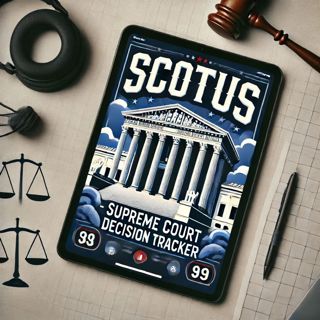
"Brazil Restores Twitter Access Amid Court Battles, Spotlighting Digital Sovereignty Debates"
In a move that demonstrates the dynamic interplay between technology and regulatory frameworks, some Brazilian users of X, formerly known as Twitter, regained access amid a nationwide ban imposed by the country's Supreme Court. This development occurred after adjustments were made concerning server access, allowing the platform to circumvent the initial restrictions. Such incidents highlight ongoing global debates over digital sovereignty and the power of national governments to regulate the internet.Meanwhile, in the United States, political reverberations from the Supreme Court's decision in Dobbs v. Jackson Women's Health Organization, which overturned Roe v. Wade, continue to influence various aspects of governance and policy. Recently, Republicans have leveraged the ruling to request that the funding decisions for Claremont schools be revisited, depicting how seminal court decisions can have wide-ranging impacts beyond their immediate legal contexts.Additionally, the Michigan Supreme Court has affirmed an increase in the minimum wage to $12.48 an hour starting next year. This decision comes amid ongoing debates about wage standards and economic policy in the U.S., affecting workers across various sectors, including the hospitality industry. The adjustment in wage policy was showcased during events like the Save MI Tips rally, underscoring the connection between judicial decisions and everyday economic realities for American workers.These events underscore the influence of supreme courts in shaping the social, economic, and digital landscapes within their jurisdictions, reflecting broader themes of legal authority, public policy, and societal change.This content was created in partnership and with the help of Artificial Intelligence AI
19 Syys 20241min

"Navigating the Supreme Court's Influence on Education Policy: Diversity, Speech, and the Changing Legal Landscape"
The Supreme Court often finds itself at the heart of some of the most pivotal debates shaping American society. A recent push by Republicans, citing the controversial fall of Roe v. Wade, has emerged in the sphere of education policy, specifically targeting funding decisions tied to the Claremont School District. This strategic move is noted in an amicus brief spearheaded by prominent figures, including House Speaker Sherman Packard, suggesting that past court interventions in educational funding should be reconsidered based on the new judicial climate post-Roe.Concurrently, educational institutions are facing other significant changes following shifts in the legal landscape, particularly concerning affirmative action policies. For example, in North Carolina, institutions like UNC Charlotte and Duke University are undergoing adaptations to uphold diversity in their enrollment processes. This action follows the evolving judicial stance on affirmative action, with these universities seeing an increase in the percentage of Black and Hispanic first-year students. Such demographics shifts depict how educational bodies are actively seeking alternative pathways to foster diversity amidst changing legal interpretations and mandates.In another vein, the power of schools to regulate speech, particularly off-campus speech, has become a contentious issue reaching the Supreme Court. This is critical as it tests the boundaries of the First Amendment concerning educational settings. The ongoing dialogue around freedom of expression and the extent to which educational institutions can exert control over student speech, especially outside school grounds, is being closely monitored. Issues like these underscore the ongoing challenge of balancing student rights and institutional responsibilities in a digital era where off-campus interactions are often publicly disseminated through social media and other online platforms.These legal challenges and adaptations occurring in the Supreme Court and across educational institutions highlight the dynamic interplay between law, policy, and societal values in shaping the educational landscape and broader societal norms in the United States.This content was created in partnership and with the help of Artificial Intelligence AI
18 Syys 20242min

Ohio Supreme Court Ruling Sparks Debate over Ballot Language and Voter Clarity
In Ohio, a significant legal decision recently unfolded when Secretary of State Frank LaRose responded to a ruling by the Ohio Supreme Court concerning the suit State ex rel. Citizens Not Politicians v. Ohio Ballot Board. This pivotal decision revolved around the approval of ballot language regarding a proposed constitutional amendment, which the Ohio Ballot Board had passed by a three-to-two vote.The controversy primarily stemmed from the contested language used on the ballot. Critics, including the group Citizens Not Politicians, argued that the language could potentially mislead voters about the implications and content of the amendment, influencing their understanding and, consequently, their vote. Such disputes over ballot language are crucial as they directly affect the clarity of information provided to voters, ensuring that citizens can make informed decisions in the democratic process.Meanwhile, at the national level, there is ongoing concern within the legal community about potential shifts in judicial perspectives, especially regarding the rights of death penalty defendants in the United States. This concern is magnified by discussions and speculations around whether the conservative-leaning Supreme Court justices might reconsider established precedents that protect these defendants. Legal analysts and human rights advocates closely monitor these discussions, as any changes could significantly impact the judicial approach to capital punishment cases, influencing both legal strategies and broader human rights implications.Both these issues highlight the dynamic and continually evolving landscape of law and justice in the United States, reflecting broader debates about democracy, justice, and human rights. These legal battles not only shape state policies and national jurisprudence but also reflect deep societal values and the ongoing struggle to balance these within the frameworks of governance and law.This content was created in partnership and with the help of Artificial Intelligence AI
17 Syys 20242min

Navigating the Changing Landscape: Legal Battles Reshape Land Use, Digital Rights, and Environmental Stewardship
In recent times, discussions around land use and digital rights have taken center stage in various judicial settings, including the Supreme Court.One prominent issue concerns the push for multifamily housing in residential areas, a movement often abbreviated as "YIMBY" (Yes In My Backyard). Advocates for multifamily zoning argue that such developments are essential to address housing shortages and foster inclusive community growth. They believe that increasing the density of housing can provide broader societal benefits like reduced housing costs and decreased urban sprawl, which in turn could help in alleviating transportation woes and lowering carbon footprints. On the other side of the debate, some homeowners and residents express concerns, often termed as a "nope" stance. They worry that such changes might lead to increased traffic, strain local resources like schools and parks, and potentially disrupt community character and property values.Another legal battle brewing is over the future of TikTok in the United States. The popular video-sharing app is set to challenge a new law aimed at banning it in the country by early next year. This case is particularly significant as it tackles issues of digital privacy, national security, and free speech. The law against TikTok comes amid fears that data collected by the app could be mishandled or misused under foreign government influence, given TikTok’s Chinese parent company, ByteDance. The platform’s defense might emphasize its efforts to protect U.S. user data and point towards the potential overreach of such a ban impacting the freedom of expression and commerce.Furthermore, local disputes like the Wells Cove water rights case in Maryland also find their path to the judiciary. The case, led by Annapolis attorney Joe Donahue on behalf of residents Jessica Pachler and Karen Jennings, touches on the delicate balance of environmental stewardship and property rights. As populations grow and climates change, conflicts over natural resources like water are becoming increasingly common. Such disputes not only affect the involved parties but can also set precedents that affect water rights and environmental law broadly.Each of these cases, whether they concern zoning laws, digital privacy, or environmental rights, reflects deeper societal values and priorities. They also demonstrate the complex ways in which law interacts with everyday life and the evolving challenges that come with technological advancements and urban development.This content was created in partnership and with the help of Artificial Intelligence AI
16 Syys 20242min

**The Battle for State Supreme Courts: Reproductive Rights and Political Influence**
The American Civil Liberties Union (ACLU) of Michigan has announced a significant financial commitment, pledging $2 million to support advertisements focused on reproductive rights within the context of Michigan's Supreme Court races. This move underscores the ongoing national discussion about the role of state supreme courts in determining policy on key issues such as reproductive rights, which have seen renewed focus following shifts in federal judicial attitudes and rulings.In South Carolina, public attention turns to a pivotal Supreme Court decision involving Clinton Folkes, a case that could potentially redefine certain legal standards in the state. Defense attorney Jason Scott Luck has taken a central role in presenting arguments, highlighting the broader implications of judicial decisions at the state level and their direct impact on individuals' lives.Meanwhile, former President Donald Trump has maintained a significant presence within the judicial realm, particularly through his interactions with the Supreme Court. Chief Justice Roberts, in particular, has played a critical role in shaping the court's decisions during a series of cases associated with Trump. These cases not only underline the lasting influence of presidential appointments on the Supreme Court’s composition but also illustrate how such appointments can align judicial outcomes with broader political strategies.Together, these developments across different states and their courts reflect deeper national dialogues about the judiciary's independence, its interplay with political entities, and its profound influence on both state and national policies. The engagement of organizations like the ACLU and the strategic legal maneuvers by political figures such as Trump demonstrate the sustained strategic importance of supreme courts in shaping critical aspects of American civic life.This content was created in partnership and with the help of Artificial Intelligence AI
15 Syys 20241min

"Nebraska Voters to Decide Fate of Controversial School Voucher Program"
In a significant move by the Nebraska Supreme Court, the fate of a controversial school voucher program will be determined directly by the state's voters. This decision emerged from a debate over the constitutionality and impact of redirecting public education funds to private K-12 education through scholarship or voucher systems. This move places significant educational policy decisions in the hands of Nebraska residents, fostering democratic engagement on an issue that affects educational structure and funding.Meanwhile, in South Carolina, the Supreme Court has made a pivotal decision regarding the death penalty case of Freddie Owens. Scheduled for execution on September 20 at the Broad River Correctional Institution in Columbia, Owens' fate was affirmed by the court's decision to proceed with the execution. This case continues to highlight the ongoing national debate over the death penalty and its implementation.In another noteworthy judicial development, the Georgia Court of Appeals ruled on restrictive covenants in employment contracts. The court specified that employee non-solicitation covenants do not necessarily need to contain specific geographical limits to be enforceable. This decision, deriving from the case North American Senior Benefits, LLC v. Wimmer, clarifies aspects of Georgia's Restrictive Covenants Act, potentially influencing how employment contracts are structured and enforced in Georgia. These collective court actions reflect the active role judiciary plays in shaping societal norms and legal precedents across various states.This content was created in partnership and with the help of Artificial Intelligence AI
13 Syys 20241min

Supreme Court Rulings Reshape Local Finances, Education, and Financial Regulations
The U.S. Supreme Court's decisions have recently had significant impacts across various facets of American life, from local government finance to educational policies and financial regulations.In Niagara County, an online property auction that involved high-bid purchases totaling almost $470,000 is undergoing a transformative change due to a Supreme Court decision. Prior to this ruling, the proceeds from such auctions directly benefited the county's finances. However, the specific adjustments to the allocation of auction funds in response to the Supreme Court's ruling were not detailed, indicating a shifting landscape in local government financial operations.In the realm of higher education, Brown University has reported a notable increase in the enrollment of Asian students for the fall semester of 2024. This change follows the Supreme Court's decision to ban race-based affirmative action in admissions processes. The decision evidently pushed colleges and universities to alter their admissions strategies, which in turn impacted demographic trends on campuses. This case highlights the far-reaching implications of the Supreme Court's rulings on educational policies and diversity in higher education.Furthermore, in the financial sector, former hedge fund manager George Jarkesy's ongoing dispute with the U.S. Securities and Exchange Commission (SEC) has encountered new developments following a Supreme Court ruling. After the decision, Jarkesy argued that his enforcement case should not be sent back to the SEC, indicating a direct influence of the Supreme Court's decision on regulatory practices and individual cases within the financial industry. This situation illustrates the Court's significant role in shaping the regulatory landscape affecting financial operations and governance.These instances underline the extensive influence of the U.S. Supreme Court in determining policy and legal outcomes across various sectors, reaffirming its role as a pivotal institution in American society.This content was created in partnership and with the help of Artificial Intelligence AI
12 Syys 20242min

"North Carolina Supreme Court's Ballot Decision Reshapes Political Landscape"
The North Carolina Supreme Court recently reached a decision that is reshaping the political landscape in the state. Robert F. Kennedy Jr., a former independent presidential candidate who has shifted his support to Donald Trump, will have his name removed from the ballot. This decision, coming shortly after a similar incident in Michigan, marks a significant twist in his campaign efforts.The removal of Kennedy's name from the ballot introduces logistical challenges as well. Preparing new ballots without his name is expected to delay the distribution of ballots by approximately two weeks and will incur additional costs over $1 million. This not only impacts the timing of voting but also places a financial burden on the state's electoral process.Elsewhere, the Missouri Supreme Court is set to handle another politically charged issue. The court will hear arguments concerning whether an abortion-rights amendment should be presented to voters. This case echoes the ongoing national debate over abortion rights and could have significant implications for Missouri's legislative and electoral landscape. These developments underscore the critical role state supreme courts play in shaping both local and national political arenas.This content was created in partnership and with the help of Artificial Intelligence AI
10 Syys 20241min





















